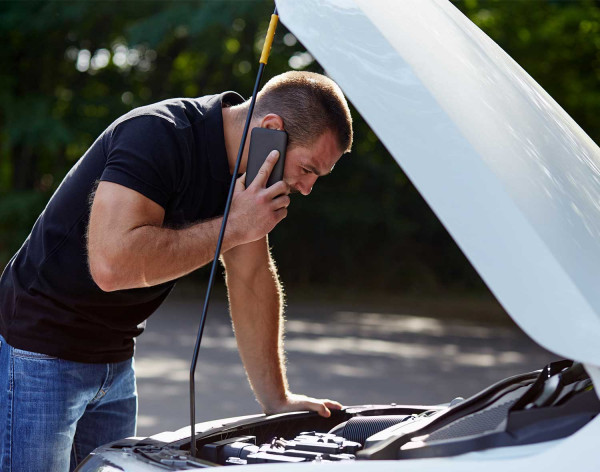What to do when your car breaks down
November 25, 2022
Whether you’re far from home or just around the corner, a vehicle breakdown can be a stressful experience.

And no matter whether you’re the driver or a passenger, some basic preparation and know-how can make a huge difference to how you manage the situation - and ensure you make it home safely.
At any time, the safety of your drivers, and anyone else accompanying them, is vital when they are out on the road.
But in the event of a breakdown (and as we all know, they happen) their wellbeing and safety is even more critical.
So familiarise yourself with these practical steps to managing a vehicle breakdown. It’s important for peace of mind - both for you and your drivers.
- If your car breaks down or makes noises that don’t sound right, indicate and pull over as far to the left as you can safely do so.
- Turn on your hazard lights to alert other road users to the problem. If it’s dark, turn your car’s interior lights on, too. The more visible you are to other drivers, the safer you’ll be.
- If possible, exit the car through the passenger door and therefore away from traffic.
- Take your warning triangle (every car should have one) and place it 45 metres behind your vehicle – that’s about 60 paces. However, this is not permitted on a motorway.
- Lifting your bonnet hood and opening your boot also increases visibility and alerts other drivers to a problem.
- Call for help. This could be your breakdown service, your employer if it’s a work car, whānau, friends, *555, a local garage or tow truck service.
- Stay with your car until help arrives. If you are on a motorway, stay in your vehicle. It is not safe to stand on the side of the road.
- Above all else, it’s really important not to panic. This stuff happens. Help will be with you soon.
The above steps rely on being prepared for a breakdown in the first place. So here are some must-dos that will help you prepare for the unexpected. And that means being
Every vehicle should have an emergency kit within easy reach. It’s vital to know exactly where it is before any journey.
Don’t set off without a fully-charged phone, or at least ensure that every driver has the ability to charge their cellphone in the car. And remember that even when there is no cellphone reception, you can still dial 111 if required.
If you or your business have roadside assistance, ensure that all drivers are aware of this and that they have the phone numbers required to call for help. Consider stowing a print out in each glove box with a list of emergency phone numbers.
Flat tyres. Always carry a fully inflated spare tyre of the correct size for the vehicle, a lug-nut wrench, and a working car jack.
Ensure every car has a warning triangle, a high-vis vest, a torch with spare batteries and a first aid kit.
It’s a good idea to have a blanket stowed in the boot of every vehicle. If help is far away, someone is injured, or if in extreme cold, a blanket can be a lifesaver.